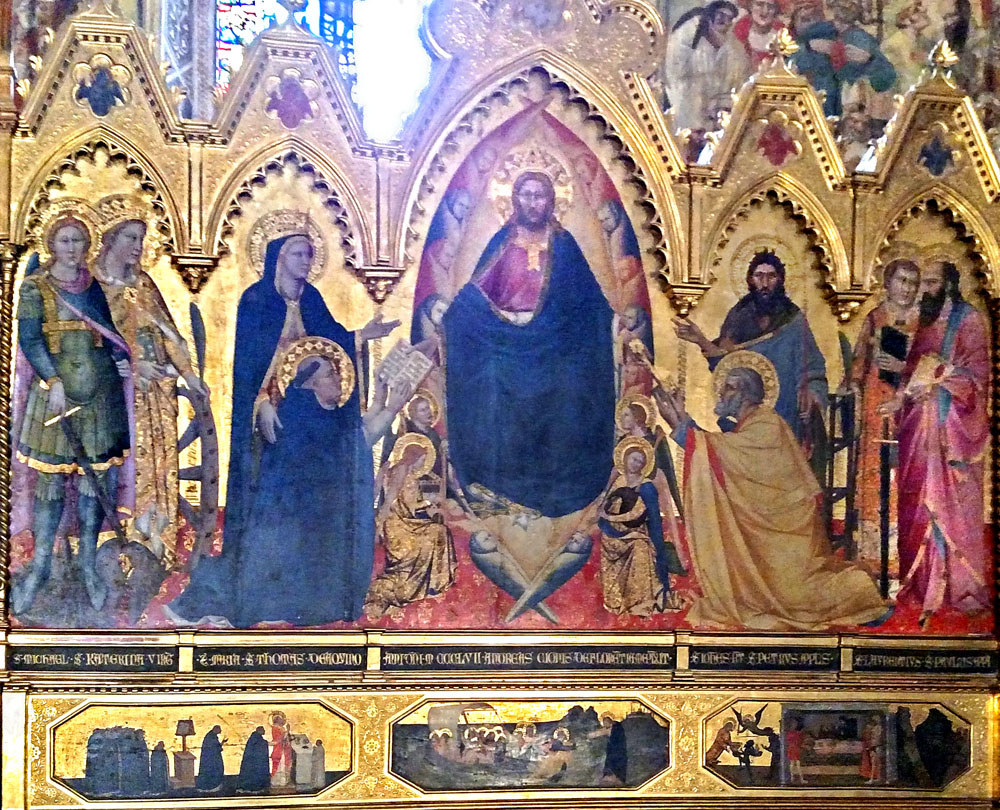Orcagna (Andrea di Cione), The Strozzi Altarpiece

1354-57
Tempera on wood, 108 x 116.5 in. (274 x 296 cm.)
Strozzi Chapel, Santa Maria Novella, Florence
The polyptych was the dominant style in Italian altarpieces in the 14th century (Ekserdjian, 12-18), and the
predella
A strip of small images added to the bottom of an altarpiece
also came into vogue at this time. In this one, Christ sits enthroned in a mandorla surrounded by seraphim and other angels. With his right hand he receives the writings of St. Thomas Aquinas, the Dominican kneeling before him, who is being presented to him by the Virgin Mary. It is not uncommon for Aquinas to be pictured as a quite portly. With his left hand Christ gives the "keys to the kingdom" (Matthew 16:19) to St. Peter, who is being presented to him by St. John the Baptist. The composition is clearly inspired by the ancient
Traditio Legis
iconographic type, in which Christ gives keys to St. Peter with one hand and a scroll or book to St. Paul with the other.
On the far left are St. Michael the Archangel (wings, armor, sword piercing a demon) and St. Catherine of Alexandria (spiked wheel, palm branch, crown). On the far right, St. Lawrence (gridiron, dalmatic) and St. Paul (sword, pointy beard, balding from the front).
In predellas it was common to reserve the central panel for the most important subject, in this case St. Peter's attempt to walk toward Jesus on water (Matthew 14:22-33). In the left panel St. Thomas Aquinas is lifted up in ecstasy while at prayer (as described in Caxton and Butler I, 511).
The predella's right panel is said on several internet sites to picture the death of the Emperor St. Henry II (on the right) and his rescue from Satan on account of his gift of a chalice to the church at Bamberg (on the left). In the background of the left side St. Michael flies in with sword and scales as a haloed saint holds what could be a chalice and a devil tries to grab at it. The person on the right in this scene could be the church official who was to receive the chalice.
The internet sites claim that this story is in the Golden Legend. It is not, nor is it anywhere among the 83 folio pages that the Acta Sanctorum devotes to this saint (July vol. 3, 711-93). St. Henry did persuade the Pope to erect a diocese at Bamberg, and he did have a church built there and furnished it with a golden cross and unnamed other precious objects.
View this image in full resolution.
Read more about Christ Enthroned.
Read more about medieval altarpieces.
Photographed at the church by Richard Stracke, shared under Attribution-NonCommercial-ShareAlike license.